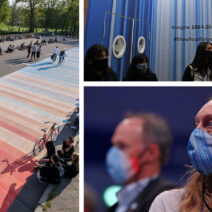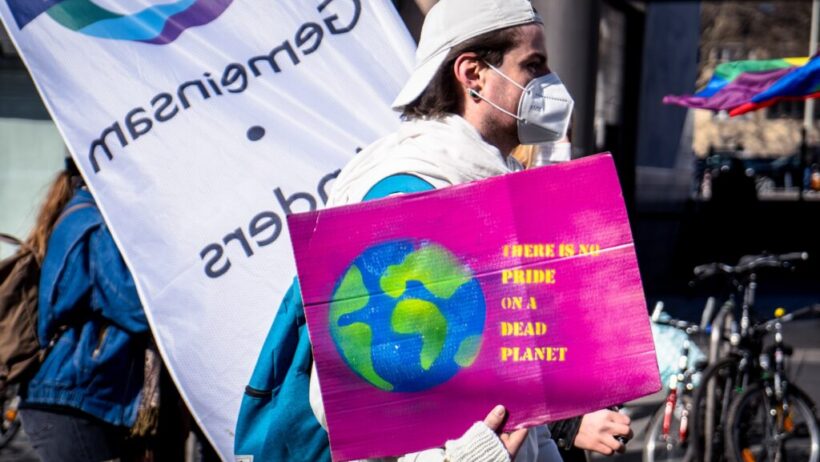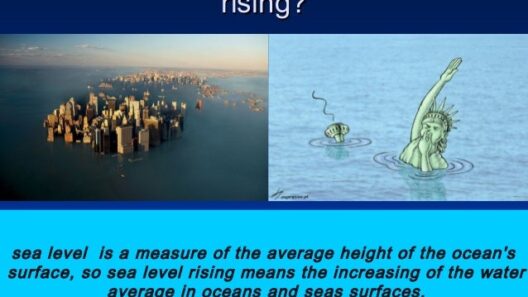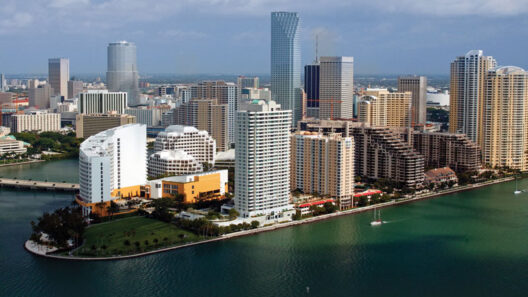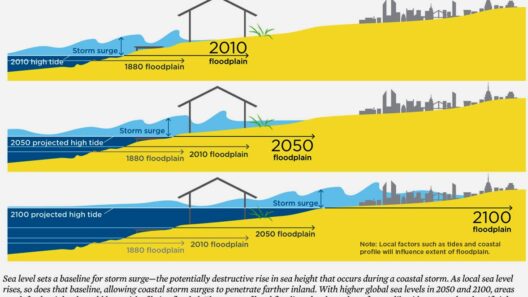Coastal cities, vibrant hubs of culture and economic activity, stand at the precipice of an existential crisis as rising sea levels loom ominously. The phenomenon, primarily attributed to climate change—melting ice caps and thermal expansion of seawater—forces us to confront not only environmental changes but also profound social and economic consequences that ripple across communities worldwide. While it may be tempting to focus solely on the environmental aspects, it is the human implications that warrant our urgent attention.
As ocean levels ascend, so too do the myriad challenges that threaten the very fabric of society. From displaced populations to faltering economies, the consequences extend far beyond the shorelines. Let’s explore the multifaceted ramifications of this escalating crisis.
Understanding the Underlying Drivers of Sea-Level Rise
Sea levels are rising—a fact that garners acknowledgment yet remains shrouded in complexity. The primary culprits: the accelerated melting of glaciers and polar ice sheets, alongside the thermal expansion caused by global warming. Yet, the fascination with this phenomenon goes deeper than mere scientific inquiry. It encapsulates humanity’s precarious relationship with nature, revealing how technological advancement and industrialization intersect with environmental stewardship. The interplay of anthropogenic influences on the climate becomes a catalyst for discussing societal vulnerabilities, drawing attention to geographical inequities that demand our focus.
Coastal Populations: The First to Feel the Impact
Inhabitants of coastal cities, comprising millions worldwide, are the first to experience the unsettling ramifications of rising tides. The onset of flooding becomes a frequent reality, not just during extreme weather events but during high tides and storms. For communities from New Orleans to Dhaka, the experience is one of persistent anxiety—not knowing whether their homes will remain intact as the next tidal surge threatens. This anxiety soon transforms into stark reality as entire neighborhoods become uninhabitable due to rising waters.
The threat goes beyond immediate physical alterations to land. As homes become flooded or eroded, communities face the looming specter of displacement. Forced migration, often termed “climate refugees,” spurs conversation about identity and belonging. When rooted ties to a community are severed, it engenders social dislocation, wherein individuals are stripped of cultural contexts and social networks that bolster resilience. Those displaced often find themselves relegated to temporary shelters or informal settlements, exacerbating urban congestion and leading to increased competition for already scarce resources.
Economic Turmoil: A Domino Effect of Displacement
The economic toll of rising sea levels is both profound and far-reaching, impacting local economies and extending to national stability. Coastal cities are pivotal to global trade; it is where ships dock, goods are manufactured, and services are rendered. The disruption of this intricate web of economic interdependence poses a significant threat to job security and livelihoods. As industries such as tourism, fishing, and real estate falter due to environmental degradation, the ripple effect ripples into national economies, with potential downturns reverberating far beyond coastal borders.
Insurance companies, already burdened by the financial implications of natural disasters, find themselves in a precarious position. As claims multiply and the frequency of extreme weather rises, insurers may increase premiums or pull out entirely from regions deemed high-risk, leaving homeowners unprotected. This creates a paradox where those least able to absorb additional financial burdens—often low-income families—are left to navigate the crisis without safety nets, thereby perpetuating cycles of poverty and inequality.
Infrastructure at Risk: The Need for Resilient Solutions
The physical infrastructure of coastal cities is also under siege. Critical systems—water, transportation, healthcare—face unprecedented stress as they contend with flooding and erosion. Roads buckle under the weight of increasing water levels, public transport halts during storms, and vital healthcare facilities must adapt to become resilient against flooding events. The need for sustainable infrastructure development is paramount. Investing in resilient solutions—sea walls, elevated structures, and improved drainage systems—becomes a pressing imperative, yet financing such projects is fraught with challenges. Decision-makers must navigate bureaucratic complexities and prioritize immediate needs within constrained budgets.
Disparities Amplified: Environmental Justice and Vulnerability
One of the most disconcerting outcomes of rising sea levels is the amplification of social and economic disparities. Marginalized communities, many of which reside in lower-lying areas, often bear the brunt of environmental degradation. These communities frequently lack the political power to influence policy changes or advocate for necessary protections. As rivers swell and coastal properties are lost, the uneven distribution of resources highlights systemic inequalities embedded within society. This further inclines the discussion toward environmental justice—a movement calling for equitable treatment and involvement of all people, especially those historically marginalized that face greater risks.
Moving Forward: Collective Action and Global Responsibility
To address the ramifications of rising sea levels, a collective response is not just necessary; it is essential. Global cooperation must take precedence, acknowledging that climate change is a curative demand that transcends borders. Policies aimed at reducing carbon emissions and enhancing adaptive capacities are paramount, requiring collaboration among individuals, governments, organizations, and international bodies. Moreover, educational initiatives are critical in fostering awareness and empowering communities with the knowledge that enables resilience against the vicissitudes of climate change.
While rising sea levels paint a daunting picture, they also present opportunities for innovative solutions and purposeful dialogue. As the tide shifts both literally and metaphorically, it invites society to rethink its relationship with nature and embrace a future predicated on sustainability, equity, and resilience.
